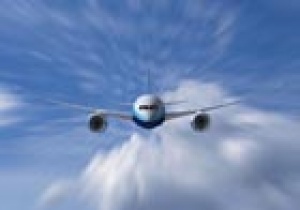Air traffic growth slows

International air traffic dipped in November as the pace of global recovery slips back to normal historical levels, according to the latest figures from the International Air Transport Association (IATA). However passenger volumes now stand 4 percent higher than the pre-recession peak of early 2008, led by Middle Eastern carriers such as Etihad, voted “World’s Leading Airlines” at the 2010 World Travel Awards.
The slowdown in November is partially skewed because of the exceptionally rapid rise in traffic volumes recorded during the fourth quarter of 2009, according to IATA, and does not necessarily signal a negative trend.
Even with the decline in November, passenger and freight traffic are still expanding in line with the industry’s historical growth trend.
Giovanni Bisignani, IATA’s Director General and CEO, said: “The industry is shifting gears in the recovery cycle. Growth is slowing towards normal historical levels in the 5-6 percent range. Relative weakness in developed markets is being offset by the momentum of economic expansion in developing markets. We see a strong end to 2010 that boosted the year’s profit forecast to $15.1 billion. More hard work will be needed in the New Year to achieve sustainable levels of profitability,”
Scheduled traffic for November showed an 8.2 percent year-on-year growth in passenger traffic, and a 5.4 percent increase for freight. The passenger load factor averaged 75.6 percent while the freight load factor stood at 55.2 percent for the month.
ADVERTISEMENT
All regions, except Africa, reported a slowing in year-on-year growth rates from October to November.
Europe’s carriers recorded 7.3 percent growth in passenger traffic, below the 9.4 percent recorded in October. Overall travel performed by the region’s carriers is only slightly ahead of the pre-recession levels of early 2008. In absolute terms there was a 1.7 percent fall in traffic volumes for the region’s carriers between October and November. Industrial labour action and adverse weather conditions particularly affected Europe’s carriers at the very end of the month.
North American carriers saw their growth slow from 12.4 percent in October to 9.5 percent in November. Capacity growth in November was 9.5 percent, resulting in a load factor of 78.1 percent, the highest among the regions. November passenger traffic levels for North American carriers equalled the pre-recession levels of early 2008.
Asia-Pacific carriers saw their growth slow from 7.3 percent in October to 5.8 percent in November. Capacity expanded relatively in tandem (5.9 percent) for a load factor of 75.6 percent. Despite the region’s strong economic growth and financial performance, November traffic levels were still 2 percent below pre-recession levels.
Latin American carriers showed the biggest decline in growth rates - from 4.9 percent in October to virtually zero in November. The lingering impact of the Mexicana failure is the largest contributing factor in this decline.
Middle East carriers saw their growth rate decline from 17.8 percent in October to 16.7 percent in November. The region’s carriers handled 16 percent more traffic in November than at the pre-recession peak in early 2008, showing that they have gained market share over the course of the recession and the recovery.
African carriers were the only region to show an increase in growth rates from October (12.6 percent) to November (16.4 percent). The region’s carriers moved 11 percent more travellers in November than they did at the pre-recession peak in early 2008.
Freight Demand
The air freight recovery hit a peak in May 2010. Compared to that peak, volumes have fallen 7 percent. The volume of air freight in November was equal to pre-recession levels of early 2008.
“The year-end holiday season has been tough for travellers and for airlines. Exceptionally adverse weather conditions in Europe and the US resulted in travel chaos. Passengers were inconvenienced. Airlines saw lost revenues and saw costs rise. As the backlogs of stranded passengers clear and the situation normalizes, there are two opportunities that must not be lost,” said Bisignani.
“In 2010, the Icelandic volcano and the year-end adverse weather made the value of air transport crystal clear. Modern life and the global economy depend on aviation. Whether you are a business person operating in the global market, families keeping in touch across distances or heads-of-state on important foreign missions, aviation is critical. While memories of the travel chaos are still fresh, it’s time to evaluate a long list of government imposed industry handicaps, including excessive taxation, out-dated ownership restrictions, over-regulation where market forces could do better, under-investment in infrastructure and generally poor regulation of monopoly suppliers. We must not let governments forget all of this while waiting for a change of seasons,” said Bisignani.

